#18th century pottery
Explore tagged Tumblr posts
Text
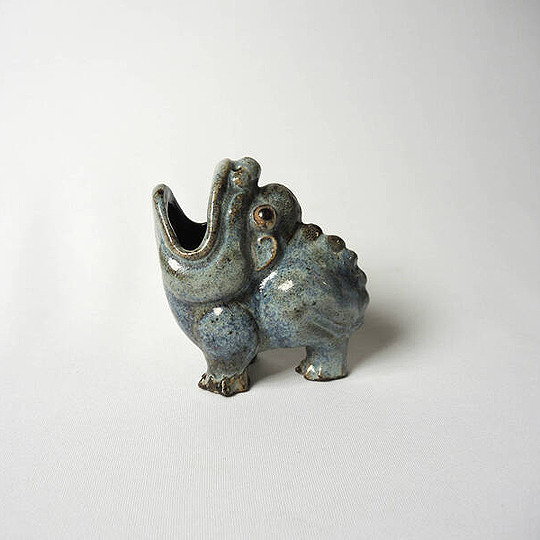
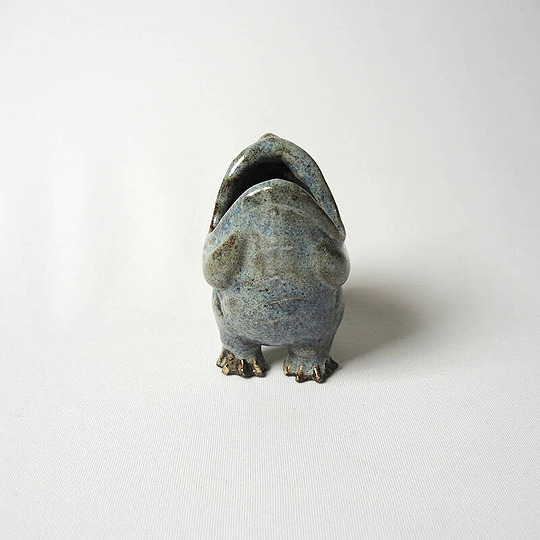
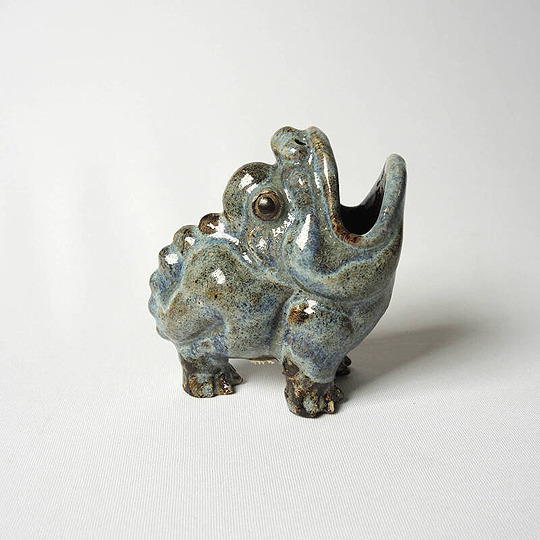
Moon Toad, end of the 18th to 1st half of the 19th century Guangzhou, China
8K notes
·
View notes
Text
Happy #LunarNewYear #YearOfTheSnake 🌕🐍


Pipes in the Form of Coiled Snakes, 1780–1820 England, Staffordshire, late 18th - early 19th c. Lead-glazed earthenware
#1 25 x 17 x 3.5 cm (9 13/16 x 6 11/16 x 1 3/8 in.)
#2 19.5 x 17 x 3.3 cm (7 11/16 x 6 11/16 x 1 5/16 in.)
The Cleveland Museum of Art 2012.122,3
#animals in art#animal holiday#european art#19th century art#18th century art#ceramics#English art#British art#snake#snakes#pair#Cleveland Museum of Art#earthenware#Staffordshire pottery#year of the snake#lunar new year#chinese new year#pipe
26 notes
·
View notes
Text
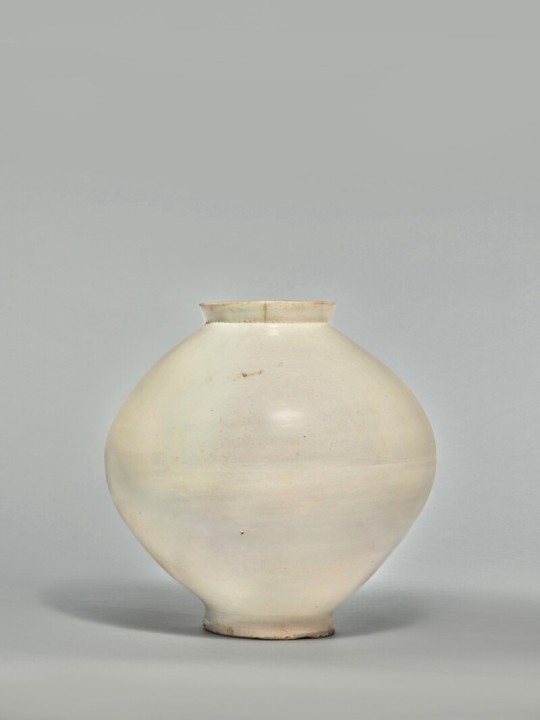
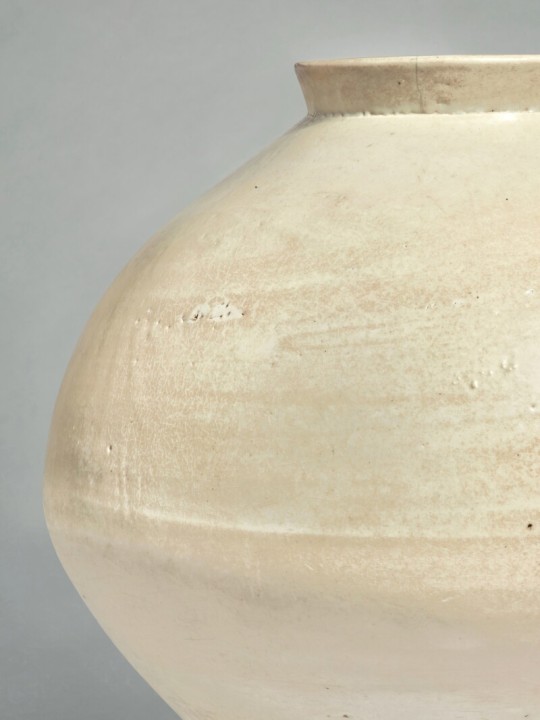

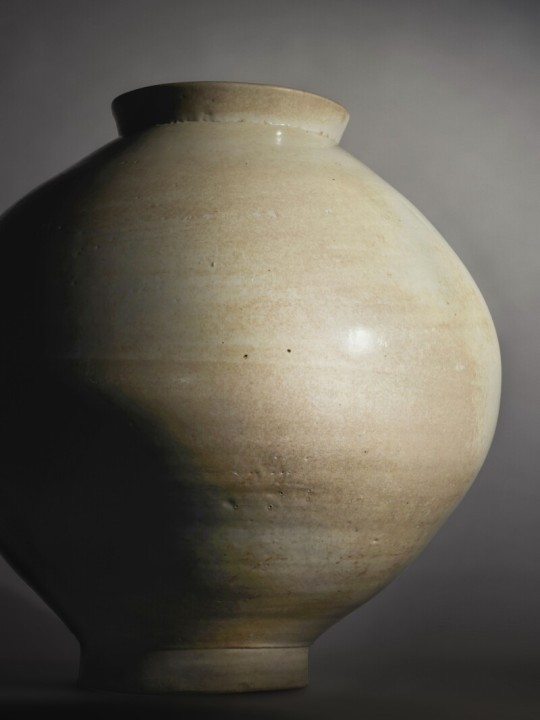
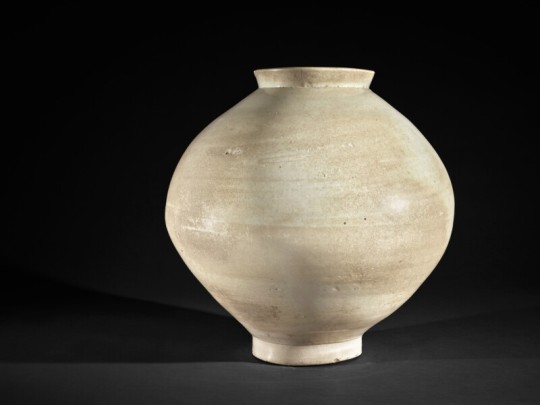
An important white-glazed moon jar Joseon dynasty, late 17th / early 18th century Height 45.2 cm; Diameter 45.4 cm.
#Moon Jar#An important white-glazed moon jar#Joseon dynasty#late 17th / early 18th century#pottery#ceramics#porcelain#ancient artifacts#archeology#archeolgst#history#history news#ancient history#ancient culture#ancient civilizations#korean history#korean art
135 notes
·
View notes
Text

Pair of potpourri vases, C. 1760
Manufactory Veuve Perrin Factory
#1760s#18th century#vintage#vintage vases#vintage pottery#vintage art#vintage ceramics#historical pottery#vases#ceramics#historical vases#historical art#so lovely
20 notes
·
View notes
Text
The famous anti-slavery token made by the Wedgewood pottery in 1787 entitled 'Am I not a Man and a Brother?' was popular among abolitionists in England. But it would be 1838 before a coin was struck for enslaved women's rights – 'Am I not a Woman and a Sister?' – and then it was made for the American Anti-Slavery Society and popular in America.

English elite women did not feel a sisterhood with women of a lower class or another race. Elite women called for political rights for their own class, not for anyone else. They even used the example of slavery to support their campaign – comparing their inequality to slavery.
"Normal Women: 900 Years of Making History" - Philippa Gregory
#book quotes#normal women#philippa gregory#nonfiction#anti slavery#token#wedgewood pottery#80s#1780s#18th century#am i not a man and a brother#abolitionist#england#30s#1830s#19th century#coin#am i not a woman and a sister#american anti slavery society#classism#white feminism#slavery#sisterhood#solidarity
21 notes
·
View notes
Text


More historically inspired pottery! Lots of mugs, a small cup, an oil lamp, and 2 pipkins (one with a spout, and one without)!! These will all be for sale in my shop when they're done.
3 notes
·
View notes
Text
youtube
'How was it made? An Agate Teapot' by the Victoria & Albert Museum (2013)
Ceramicist Michelle Erickson recreates, from scratch, an 18th century agateware teapot in the collection of the V&A Museum.
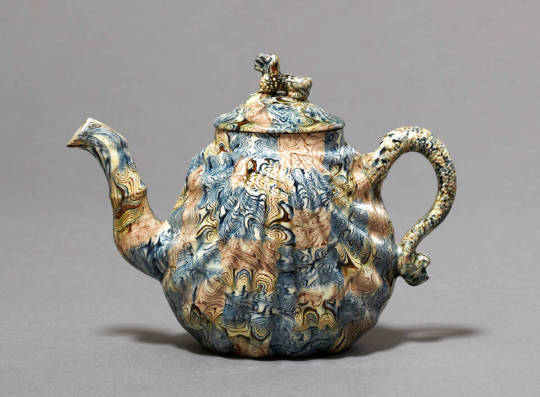
Lead-glazed 'agate' earthenware teapot, 'pectin shell' form. Made in Staffordshire, England, c. 1750-1765. In the collection of the V&A Museum.
#teapot#ceramics#18th century#reproduction#pottery#surface pattern#pattern#video#process video#start to finish#clay#earthenware#rococo#shell#dolphin#fashion history#homewares#tableware#teaware#michelle erickson#learning by doing#agate#agateware#staffordshire#the potteries#staffordshire pottery#pectin shell#design history#decorative arts#how it's made
92 notes
·
View notes
Text

Bowl - China, 18th century
7 notes
·
View notes
Text
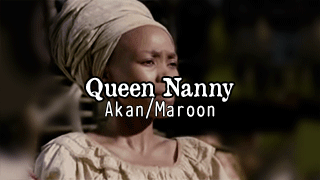

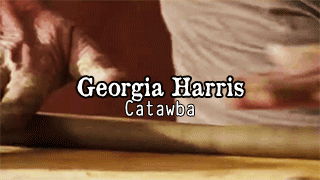





Historical Indigenous Women & Figures [6]:
Queen Nanny: the leader of the 18th century Maroon community in Jamaica, she led multiple battles in guerrilla war against the British, which included freeing slaves, and raiding plantations, and then later founding the community Nanny Town. There are multiple accounts of Queen Nanny's origins, one claiming that she was of the Akan people from Ghana and escaped slavery before starting rebellions, and others that she was a free person and moved to the Blue Mountains with a community of Taino. Regardless, Queen Nanny solidified her influence among the Indigenous People of Jamaica, and is featured on a Jamaican bank note. Karimeh Abboud: Born in Bethlehem, Palestine, Karimeh Abboud became interested in photography in 1913 after recieving a camera for her 17th birthday from her Father. Her prestige in professional photography rapidly grew and became high demand, being described as one of the "first female photographers of the Arab World", and in 1924 she described herself as "the only National Photographer". Georgia Harris: Born to a family of traditional Catawba potters, Harris took up pottery herself, and is credited with preserving traditional Catawba pottery methods due to refusing to use more tourist friendly forms in her work, despite the traditional method being much more labour intensive. Harris spent the rest of her life preserving and passing on the traditional ways of pottery, and was a recipient of a 1997 National Heritage Fellowship awarded by the National Endowment for the Arts, which is the highest honor in the folk and traditional arts in the United States. Nozugum: known as a folk hero of the Uyghur people, Nozugum was a historical figure in 19th century Kashgar, who joined an uprising and killed her captor before running away. While she was eventually killed after escaping, her story remains a treasured one amongst the Uyghur. Pampenum: a Sachem of the Wangunk people in what is now called Pennsylvania, Pampenum gained ownership of her mother's land, who had previously intended to sell it to settlers. Not sharing the same plans as her mother, Pampenum attempted to keep these lands in Native control by using the colonial court system to her advantage, including forbidding her descendants from selling the land, and naming the wife of the Mohegan sachem Mahomet I as her heir. Despite that these lands were later sold, Pampenum's efforts did not go unnoticed. Christine Quintasket: also known as "Humishima", "Mourning Dove", Quintasket was a Sylix author who is credited as being one of the first female Native American authors to write a novel featuring a female protagonist. She used her Sylix name, Humishima, as a pen name, and was inspired to become an author after reading a racist portrayal of Native Americans, & wished to refute this derogatory portrayal. Later in life, she also became active in politics, and helped her tribe to gain money that was owed them. Rita Pitka Blumenstein: an Alaskan Yup'ik woman who's healing career started at four years old, as she was trained in traditional healing by her grandmother, and then later she became the first certified traditional doctor in Alaska and worked for the Alaska Native Tribal Health Consortium. She later passed on her knowledge to her own daughters. February 17th is known as Rita Pitka Blumenstein day in Alaska, and in 2009 she was one of 50 women inducted into the inaugural class of the Alaska Women's Hall of Fame Olivia Ward Bush-Banks: a mixed race woman of African American and Montaukett heritage, Banks was a well known author who was a regular contributor to the the first magazine that covered Black American culture, and wrote a column for a New York publication. She wrote of both Native American, and Black American topics and issues, and helped sculptor Richmond Barthé and writer Langston Hughes get their starts during the Harlem Renaissance. She is also credited with preserving Montaukett language and folklore due to her writing in her early career.
part [1], [2], [3], [4], [5] Transphobes & any other bigots need not reblog and are not welcome on my posts.
565 notes
·
View notes
Text
Anonymous asked: What are some of your favorite antique things to collect? Do you have any especially favorite finds?
Strawpage/tendermiasma
That's hard... I love furniture, it's so neat to see how they shaped and reflected trends and values and just the pure craftsmanship is so wonderful. My favorite styles hover around the 17th and 18th centuries-- Jacobean, George III, Federal/Hepplewhite/Sheridan. There's something about the crispness of the detailing of the last four that makes an ornamented piece feel so light and airy. I love Jacobean because every piece looks like it was hauled out of a fire, the dark patina is so rich. I don't actually own any originals from these periods (yet!!!) but fashion is a flat circle and Jacobean had a revival in the late 19th and a couple decades into the 20th century. I have a court cabinet from probably around the 1930s that I found here in Austin that was a part of this revival and you can see the Jacobean influence also carries a secondary Arts and Crafts influence that the US was on the tail end of. The engraving on the panels are a little bit flatter than the traditionally extremely 3D Jacobean carving, and that's what Arts and Crafts brought. They kept the dark patina look and I think it's interesting to think about how much lighter actual Jacobean furniture might have been during its time, and that we're choosing to imitate its aged look as part of its original intent-- sort of like how we thought Roman statues started out white when they were actually originally brightly painted, but we choose to make them white in most of our casual references. Regardless the charred finish looks amazing against light colored walls. It feels contemplative. Welsh 18th century design also has that quality although more pared-down but still warm and welcoming somehow. I love it.
Back to Georgian/Sheridan/Hepplewhite/Federal though, also don't actually own any from that time either, although I have been heavilyyyyyyy eyeing a credenza from one of my favorite antique dealers in Austin who randomly has some incredible pieces. I could't buy it responsibly but they're all free right there for me to study and admire. Sheridan and Hepplewhite are super similar and a good way to tell them apart is the feet. If they're tapered little unadorned pegs, it's probably Hepplewhite, and if they have a ball or box on the end or have some other angular detailing, it's probably Sheridan. THOSE styles came back around almost 200 years later in the woodwork of midcentury modern which I think is so neat. You can also help yourself date a piece with other little things, like screws. There was a period in the early-mid 1800s where screws had machine-made threads while their heads were still cut by hand with a hacksaw; the machinery for cutting screwheads came later. Philips screws weren't widely used until the 1940s so that's another possible way to tell. However you have to be careful because a lot of furniture gets repaired and modern hardware is usually used, so it's good to hunt around on it for signs of the original hardware. You can also tell whether hardware is new or possibly original by the amount of patina built up around the hardware. That's hard to fake.
I got lost again. I also love looking at pottery and dishware because there's so much information and history in its marks. It's always such a fun little forensics game to look at its stamps and writings and symbols on the bottom to track where it's been, who made it, is it a forgery of a well-known artisan? That happened to me really recently when I found a Meissen tea set at a thrift store and it turns out I believe I have one actual Meissen cup in there from mid 1800s. The only way I could figure it out it was genuine and also its general date was because of its imperfections, which is pretty cool. Meissen had a specific way of marking B-grade dishware that they only used during certain time periods, and thankfully there's document of it, and my piece carried it. I don't care if she's not A-grade, she's beautiful and I'm a sucker for blue and white china.
I could talk a lot more but I'm just rambling at this point so feel free to ask more. I love it all so much. I've had a great time learning so much more than I bargained for with every new piece I find. I'm still mourning the Austin Antique Mall closure that happened last May but thankfully there's another great one in Round Rock and I should go back next month.

The smoking-gun wheel marks for the date and authenticity of the Meissen cup

My Jacobean-revival court cabinet from probably the 1930s

In her natural habitat. I built the fake fireplace! None of the existing ones were Georgian enough for me lol
The coffee table is I believe late 1930s and the chair is a 1960s wingback that got recovered in probably the 90s and I want to get it recovered again when I can. I'm at capacity since I'm in a 1-bedroom apartment and my primary goal is a well-designed space but when I can get an office it's going to be so over
49 notes
·
View notes
Text
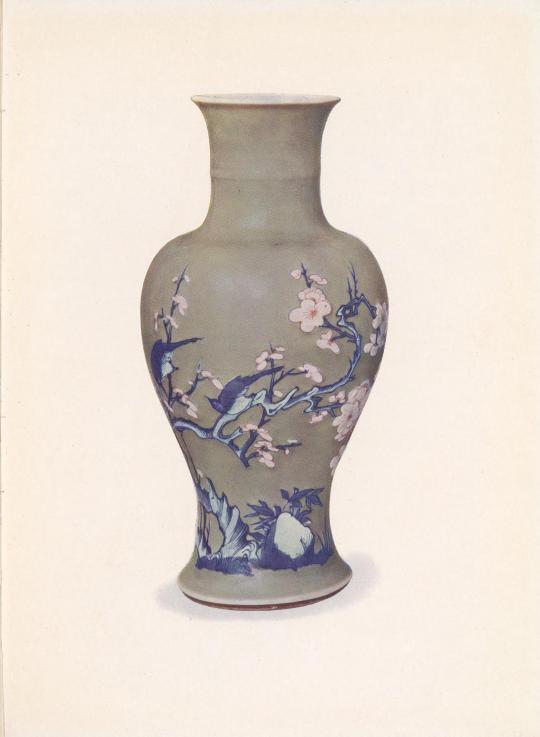
18th century vase from R.L. Hobson's Chinese pottery and porcelain (1915).
Full text here.
251 notes
·
View notes
Photo

Archaeology
Archaeology is a wide subject and definitions can vary, but broadly, it is the study of the culture and history of past peoples and their societies by uncovering and studying their material remains, i.e. tools, ruins, and pottery. Archaeology and history are different subjects but have things in common and constantly work with each other. While historians study books, tablets, and other written information to learn about the past, archaeologists uncover, date, and trace the source of such items, and in their turn focus on learning through material culture.
As much of human history is prehistoric (before written records), archaeology plays an important role in understanding the past. Different environments and climates help or hinder the survival of materials, e.g. papyri can survive thousands of years in the hot and dry desert but would not survive in damp conditions. Waterlogged conditions, such as bogs, can preserve organic material, like wood, and underwater wrecks are also excavated using diving equipment. Working everywhere from digging in the ground to testing samples in laboratories, archaeology is a wide-ranging discipline and has many subsections of expertise. The two rapidly widening areas are experimental archaeology and ethnoarchaeology. Experimental archaeology tries to recreate ancient techniques, such as glass making or Egyptian beer brewing. Ethnoarchaeology is living among modern ethnic communities, with the purpose of understanding how they hunt, work, and live. Using this information, archaeologists hope to better understand ancient communities.
Archaeology of the Past
Archaeology as an academic study, career, and university subject is a fairly recent development. Nevertheless an interest in the past is not new. Humankind has always been interested in its history. Most cultures have a myth or story that explains their foundation and distant ancestors. Ancient rulers have sometimes collected ancient relics or rebuilt monuments and buildings. This can often be seen as political strategy - a leader wanting to be identified with a great figure or civilisation from the past. On the other hand, ancient leaders have also been known for their curiosity and learning. King Nabonidus of Babylon, for example, had a keen interest in the past and investigated many sites and buildings. In one temple, he found the foundation stone from 2200 years before. He housed his finds in a kind of museum at his capital of Babylon. The Roman and Greek historians wrote books about the past, and the stories of famous heroes and leaders have come down to us.
However, modern archaeology, or at least its theories and practice, stem from the antiquarian tradition. In the 17th and 18th centuries CE, wealthy gentleman scholars, or antiquarians as they are also known, began to collect classical artefacts. Fuelled by interest, they began to make some of the first studies of sites like Pompeii and drew ancient monuments in detail. The first scientific excavation has been attributed to Thomas Jefferson (third president of the United States of America) who dug up some of the burial mounds on his property in the state of Virginia, USA. The beginnings of modern field techniques were pioneered by General Augustus Lane-Fox Pitt Rivers, who excavated barrows at Camborne Chase with systematic recording and procedure. In the USA in the 1960s CE, archaeology went through a phase of new theories, often called processual archaeology. This approach has a scientific approach to questions and designs models to suggest answers and test its theories.
Continue reading...
32 notes
·
View notes
Text
#TwoForTuesday:
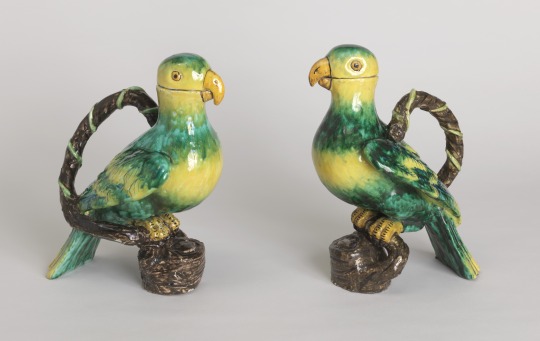
Pair of Parrot Pitchers manufactured by Holiçs (Hungary), late 18th c. tin-glazed earthenware a) H x W x D: 22.8 × 14.3 × 20 cm (9 in. × 5 5/8 in. × 7 7/8 in.) b) H x W x D: 22.8 × 14.6 × 20 cm (9 in. × 5 3/4 in. × 7 7/8 in.) Cooper Hewitt, Smithsonian Design Museum collection
#animals in art#european art#birds in art#bird#birds#parrot#parrots#pitcher#pair#ceramics#pottery#Hungarian art#decorative arts#Two For Tuesday#Cooper Hewitt#18th century art
11 notes
·
View notes
Text
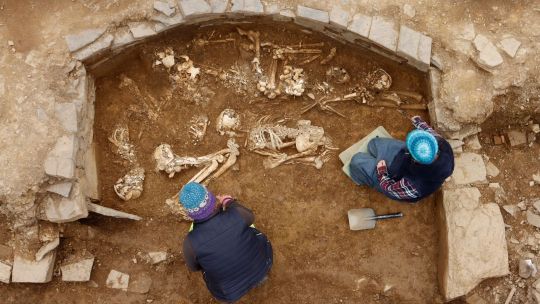
'Incredibly Rare' 5,000-Year-Old Tomb Discovered in Orkney, Scotland
A three-week excavation took place at the Neolithic site at Holm.
Archaeologists have discovered the ruins of an "incredibly rare" 5,000-year-old tomb in Orkney.
Fourteen articulated skeletons of men, women and children were unearthed at the Neolithic site at Holm on the mainland.
Experts from National Museums Scotland (NMS) and Cardiff University also uncovered additional human bones following a search for the tomb's precise location.
Volunteers and students from the University of Central Lancashire made other discoveries during the three-week excavation, including finding further remains, pottery, stone tools and a bone pin.
NMS said the Neolithic site had been buried beneath a pasture field after it had been largely destroyed without record in the late 18th or early 19th century to supply building stone for a nearby farmhouse.
In 1896, the farmer's son found eight skeletons at the site alongside traces of walling, a stone macehead and ball.

The Orcadian's report on the discovery featured local antiquary James Walls Cursiter, who speculated that the site was a ruined tomb - which prompted the location of the 2023 search.
The excavation was led by Dr Hugo Anderson-Whymark, of NMS, and Professor Vicki Cummings, of Cardiff University.
It targeted anomalies recorded via a geophysical survey undertaken in 2021.
It revealed traces of a cairn more than 15m in diameter, which contained a stone structure accessed through a 7m-long passage.
The archaeologists said a stone chamber lay at the centre of the cairn, and this was surrounded by six smaller side cells that once had corbelled stone roofs.
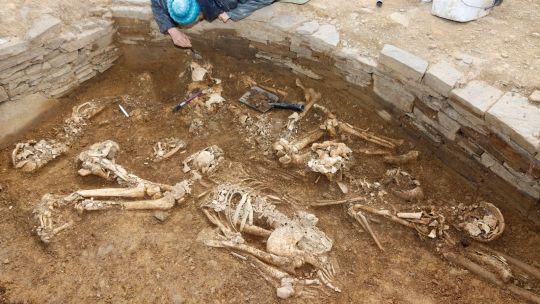
These features allow the tomb to be classed as a "Maes Howe-type" passage grave.
Only 12 tombs of this type are known in Orkney - including Maes Howe, Cuween and Quoyness - and are considered the "pinnacle of Neolithic engineering" in northern Britain.
Dr Anderson-Whymark said: "Orkney is exceptionally rich in archaeology, but we never expected to find a tomb of this size in a such a small-scale excavation.
"It's incredible to think this once impressive monument was nearly lost without record, but fortunately just enough stonework has survived for us to be able understand the size, form and construction of this tomb."

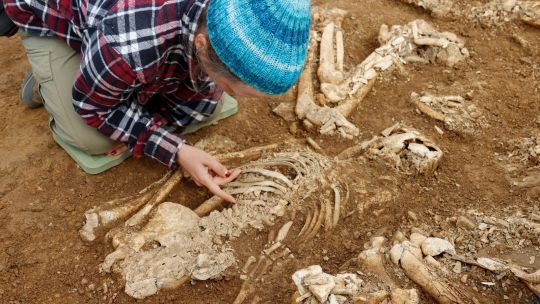
Professor Cummings added: "The preservation of so many human remains in one part of the monument is amazing, especially since the stone has been mostly robbed for building material.
"It is incredibly rare to find these tomb deposits, even in well-preserved chambered tombs, and these remains will enable new insights into all aspects of these peoples' lives."
By Jenness Mitchell.

#'Incredibly Rare' 5000-Year-Old Tomb Discovered in Orkney Scotland#ancient tomb#ancient grave#ancient artifacts#archeology#archeolgst#history#history news#ancient history#ancient culture#ancient civilizations
195 notes
·
View notes
Photo
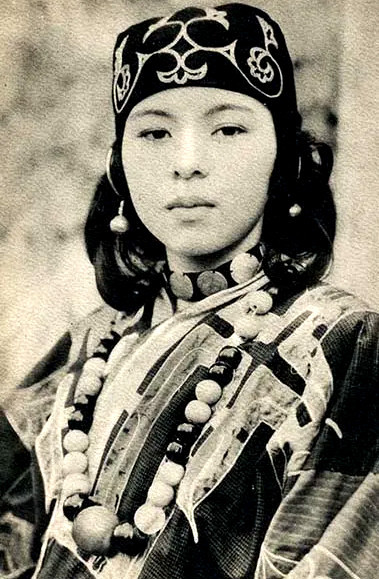
[Photo above: an Ainu woman in 1920s]
Legends and myths about trees
Forest spirits and natives (4)
Korpokkur (or Korbokkur) – ‘People under the butterbur leaves’
Korpokkur are the tribes of dwarfs in folklore of the Ainu people of the northern Japanese islands, meaning 'people under the butterbur leaves'.
The Ainu believe that the korpokkur were the people who lived in the Ainu's land before the Ainu themselves lived there. They were short of stature, agile, and skilled at fishing. They lived in pits with roofs made from butterbur leaves.
Long ago, the korpokkur were on good terms with the Ainu, and would send them deer, fish, and other game and exchange goods with them. The little people hated to be seen, however, so they would stealthily make their deliveries under the cover of night.
One day, a young Ainu man decided he wanted to see a korpokkur for himself, so he waited in ambush by the window where their gifts were usually left. When a korpokkur came to place something there, the young man grabbed it by the hand and dragged it inside. It turned out to be a beautiful korpokkur woman with a tattoo on the back of her hand (the tattooing of Ainu women is said to be based on this). She was so enraged at the young man's rudeness that her people have not been seen since. Their pits, pottery, and stone implements, the Ainu believe, still remain scattered about the landscape.
[History of Ainu]
The Ainu are an indigenous people from Sakhalin in the north to the Kuril Islands and Kamchatka Peninsula in the north-east and around the northern Japanese archipelago, especially in Hokkaido. The Ainu have long had an economic zone around the Sea of Okhotsk region.
They worshipped bears and wolves, as well as gods embodied in the elements of nature, such as water, fire and wind.
Ainu is the Ainu language for 'human' and is believed to have originally meant 'human' as a concept as opposed to 'kamui' (a designation referring to nature based on the spirit that everything in nature has a heart).
The Ainu people were conquered and their land confiscated by neighbouring Japan and Russia between the 15th and 18th centuries. Later, in the 19th century, forced them to convert, apply their customs and belong. During the Soviet era, hundreds of Ainu were executed or forcibly relocated. Today, the population and the Ainu language are in decline and there are revival efforts for their traditional culture.
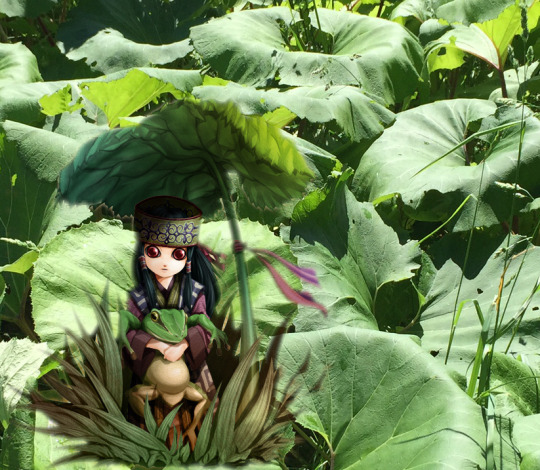
木にまつわる伝説・神話
森の精霊たちと原住民 (4)
コロポックル (又はコロボックル) 〜「蕗の葉の下の人々」
コロボックルは、アイヌ語で「蕗の葉の下の人」という意味を持つ、アイヌに伝わる小人族のこと。
アイヌがこの土地に住み始める前から、この土地にはコロボックルという種族が住んでいた。彼らは背丈が低く、動きがすばやく、漁に巧みであった。又屋根をフキの葉で葺いた竪穴にすんでいた。
昔、コロボックルはアイヌと仲が良く、鹿や魚などの獲物を送ってもらったり、品物を交換した���していた。しかし、小人たちは人目につくのを嫌い、夜陰に紛れてこっそりと配達していた。
ある日、アイヌの青年がコロボックルを一目見たいと思い、いつも贈り物を差し入れる窓際で待ち伏せしていた。そのコロボックルがそこに何かを置こうとすると、青年はそれを手で掴んで屋内に引きずり込んだ。すると、それは美しい女性のなりをしておりその手の甲には刺青があったという (なおアイヌの婦人のする刺青はこれにならったものであるといわれている)。コロボックルは青年の無礼に激怒し、一族を挙げて北の海の彼方へと去ってしまった。以降、アイヌの人々はコロボックルの姿を見ることはなくなったという。現在でも土地のあちこちに残る竪穴や地面を掘ると出てくる石器や土器は、彼らがかつてこの土地にいた名残である。
[アイヌの歴史]
アイヌ民族は、北は樺太から北東の千島列島・カムチャツカ(勘察加)半島、日本列島北部周辺、とりわけ北海道の先住民族である。アイヌ民族は永くオホーツク海地域一帯に経済圏を有していた。彼らは、熊やオオカミ、さらに水、火、風といった自然の要素に具現化された神を崇拝していた。
アイヌとはアイヌ語で「人間」を意味する言葉で、もともとは「カムイ」(自然界の全てのものに心があるという精神に基づいて自然を指す呼称) に対する概念としての「人間」という意味であったとされている。
アイヌ民族は、15世紀から18世紀にかけて、近隣国の日本とロシアに征服され、土地を没収された。その後、19世紀には改宗、慣習の適用、帰属を余儀なくされた。ソ連時代には数百人のアイヌが処刑されたり、強制移住させられた。現在、人口やアイヌ語は減少しつつあり、伝統文化の復興に向けた取り組みが行われている。
#trees#tree legend#tree myth#forest spirit#nature worship#ainu#drawf#koropokkur#hokkaido#sea of okhotsk#kamchatka peninsula#folklore#legend#mythology#nature#art
308 notes
·
View notes
Text
By Luke Gentile
The FBI announced last week its recovery of at least 22 historical artifacts taken after the American victory at the Battle of Okinawa in World War II.
A deal to return the artifacts to the Government of Japan, Okinawa Prefecture, was arranged via the FBI, and a repatriation ceremony will be held after the artifacts return for the first time in nearly eight decades, according to a release from the FBI Boston Division.
Several artifacts date back to the 18th and 19th centuries and hold a place in the long history of Okinawa, including portraits, a hand-drawn map, pottery, and ceramics, the release noted.
“It’s incredibly gratifying when the FBI is able to recover precious cultural property that has been missing for almost 80 years,” Jodi Cohen, the special agent in charge of the FBI Boston Division, said.
“This case highlights the important role the public plays in recognizing and reporting possible stolen art. We’d like to thank the family from Massachusetts who did the right thing in reaching out to us and relinquishing these treasures so we could return them to the people of Okinawa,” Cohen said.
Multiple artifacts now returning to Okinawa were registered with the FBI’s National Stolen Art File in 2001 by the Okinawa Prefectural Board of Education, according to the release.
In 2023, the family of a late World War II veteran (who did not serve in the Pacific) discovered some of the valuable Asian art while they went through his personal items, and they found at least four of the works in the National Stolen Art File, according to the FBI.
“It’s an exciting moment when you watch the scrolls unfurl in front of you and you just witness history, and you witness something that hasn’t been seen by many people in a very long time,” Geoffrey Kelly, an FBI Boston special agent and Art Crime Team member, said.
“These artifacts are culturally significant, they’re important pieces of Japan’s identity. These were especially important because they were portraits of Okinawan kings dating back to the 18th, 19th centuries. This case really illustrates part of the work we do on the Art Crime Team. It’s not always about prosecutions and putting someone in jail. A lot of what we do is making sure stolen property gets back to its rightful owners even if it’s many generations down the road,” Kelly said.
Assisting the FBI in the return of the items was the Smithsonian Institute’s National Museum of Asian Art, according to the release.
“The FBI reached out, asked us for some help making sure they knew how to care for the works and that they had a safe place to store them while they worked out the repatriation details. It’s an honor to be able to help the works go back to their home,” Danielle Bennett, the head of collections management at the National Museum of Asian Art at the Smithsonian Institute, said.
You can see all of the recovered artifacts here.
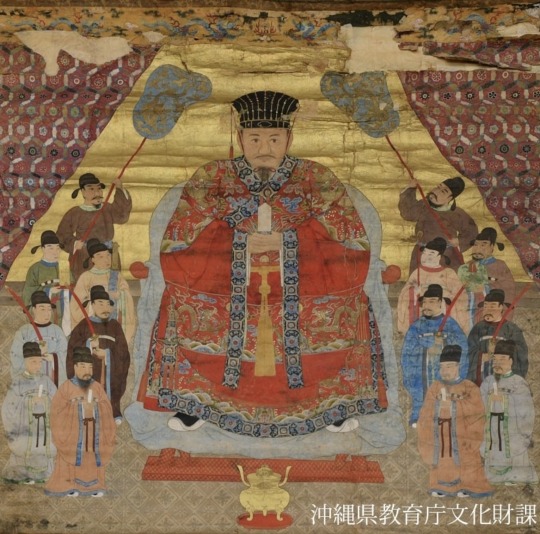
82 notes
·
View notes